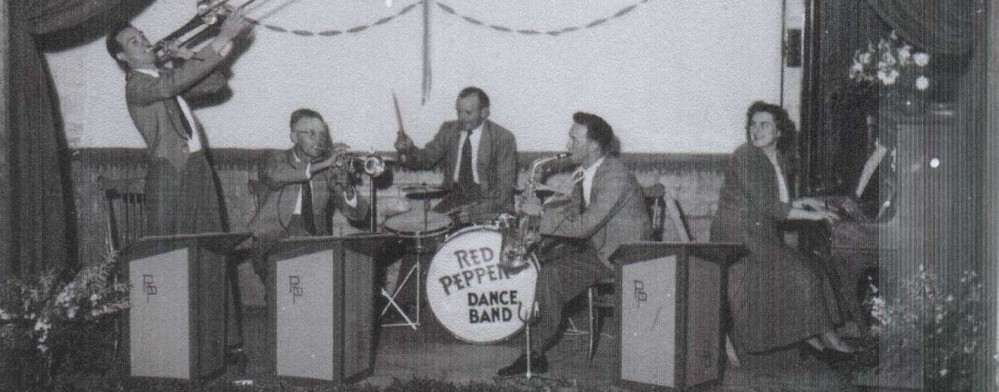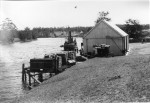Clarence Town like many places on the Hunter, Paterson and Williams Rivers was first visited by timber getters, with land grants made as early as 1825.[1] With its deep water river frontages, Clarence Town was early a place from which timber and other goods could be transported and many of the grantees further up the Williams River made application for small grants at this head of navigation to establish stores for their produce awaiting transshipment.[2] Clarence Town was proclaimed a town in 1832, the third in the Hunter district after Newcastle and Maitland, and provided with a generous street plan. Also established here was a shipbuilding industry where Australia’s first ocean-going steamer was built. The early establishment of relatively small farms on the river and the ease of river transport led to rapid growth. Along with tobacco factories and steam driven flour mills, one of the earliest National Schools was founded here in 1849.
Despite its early establishment and river traffic, Clarence Town was not provided with services as quickly as either nearby Paterson or Dungog. A local sums up the situation as he saw it in 1847:
“Grievances.— Here we are, I may say, in the centre of six populous settlements —being distant about twenty-four miles from Burral, Stroud and Carrington, eighteen from Dungog and, Raymond Terrace, and sixteen from Paterson— yet we have no bench or police office, and are obliged to travel to the latter place to seek redress, however trifling the case may be, which is the means of a great many cases being overlooked, that would be punished, were there a court held here. Whilst stating our grievances, I cannot omit the circumstance that we have no church or chapel, although the inhabitants some time ago made a collection for the making and baking of a kiln of bricks, and there it stands, like the Tower of Babel, a mass of bricks, as a momento (not of the confusion of tongues), but a diversity of creeds, some wishing them to be used for a Presbyterian, others Episcopalian, and some for a Catholic place of worship; so between conflicting opinions, we are without any place.”[3]
The 1850s and 1860s was a period of expansion and was when many of the Churches of Clarence Town were built.[4] For an observer of 1858, the situation seems to have much improved over the decade before:
“The ground of the township is not yet wholly cleared, nor are the streets very discernible to the eye of a stranger. Still, the situation is remarkably agreeable, and the number of the houses is considerable. Among those which stand most, conspicuous are the three churches, the National school, and the stores of Messrs. William Johnston, Lyall, and Farquhar. There are, also several excellent inns; the flour mills of Messrs. Dark and Achurch, the well known shipbuilding establishment, of Mr. Lowe, and wharves for the discharge and loading of vessels.”[5]
By the 1860s, regular coach services connected the steamer services of Clarence Town with Dungog and other rural towns, and a new courthouse was erected in 1869. In the 1880s, many of Clarence Town’s most prominent public buildings and private houses were built and it was in this period that the functional river steamers began to be supplemented by pleasure cruises from Newcastle. Although the decline of Clarence Town in the 20th century is generally attributed to the railway route running through Dungog, there is evidence that even before this it was affected by the tobacco tax, four floods and the depression of the 1890s.[6]
When Wallarobba Shire was formed in 1906, it remained based at Dungog and from the reports of its deliberations in the Dungog Chronicle rarely, if ever, concerned itself with its smaller towns such as Clarence Town or Gresford. Clarence Town seems to have been left to its own devices as far as town management was concerned and possibly had a Town Committee, though what its legal status was is unclear; certainly a Progress Association also existed to help with local improvements.
The slow decline in Clarence Town’s population has reversed in recent times as it has gradually transformed into a commuter suburb for those working in Newcastle.

